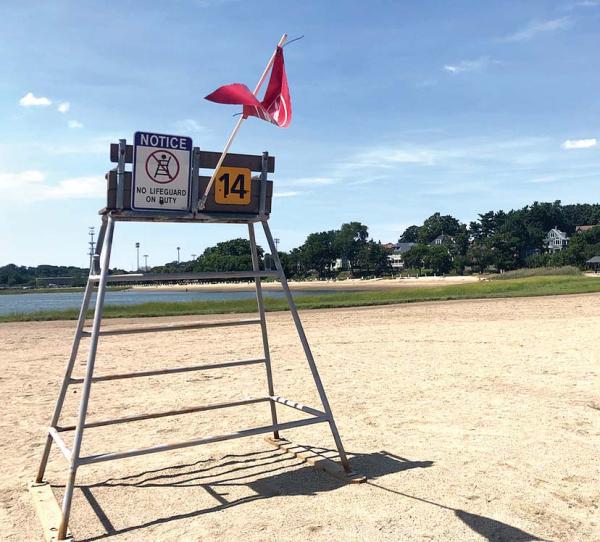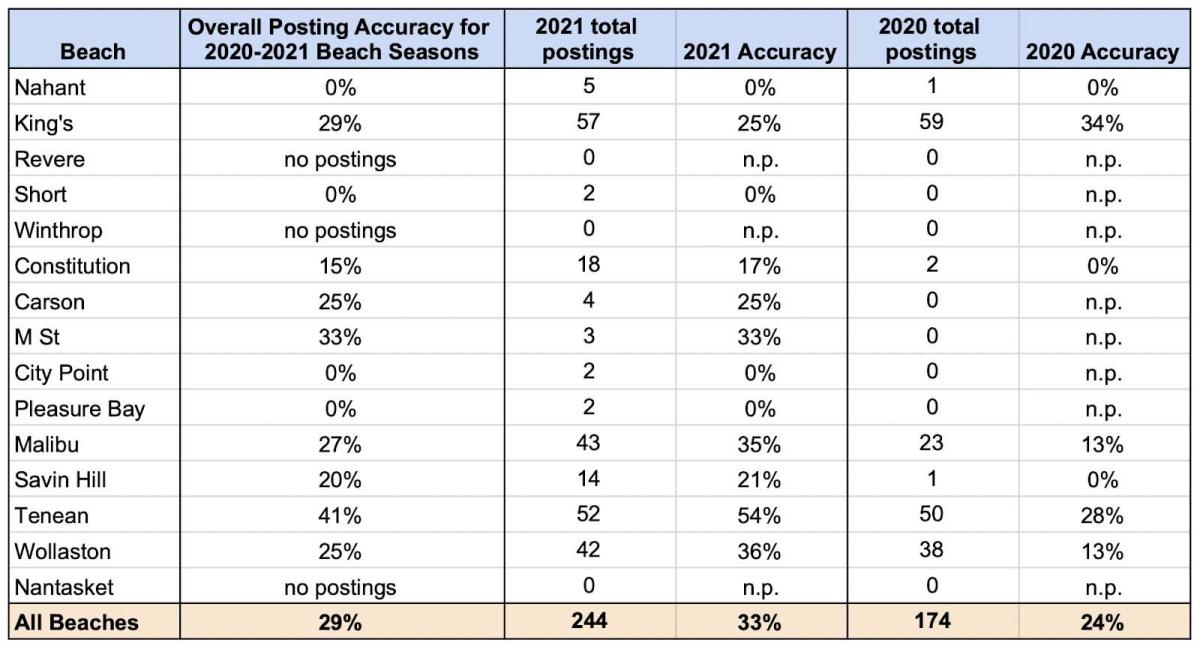August 3, 2022

A red flag warning of unsafe qater quality for swimmers at Malibu Beach in Dorchester in June 2020. Photo by Bill Forry
The current posting system for Massachusetts ocean beaches is fundamentally flawed and needs to be fixed
Last week, Save the Harbor/Save the Bay issued a report on beach postings on the Metropolitan Region’s ocean beaches owned by the Commonwealth and managed by DCR. Based on our review of 2020-2021 data from 15 beaches from Nahant to Nantasket, on average 80 percent of the postings and corresponding red flags were wrong.
On the Dorchester beaches, posting accuracy was under 30 percent, a failing grade by any standard. It appears as if you would be better off flipping a coin than believing a red flag on our ocean beaches.
The study, conducted by our Director of Strategy & Communications Bruce Berman and Policy Assistant Caroline Adamson, focused on the Metropolitan Region’s public beaches. However, our analysis suggests that this is a statewide problem, affecting nearly every ocean beach in Massachusetts.
The first step towards solving a problem is to acknowledge that you have one. Unfortunately, the Department of Public Health (DPH) seems to have buried their heads in the sand, recently calling beach postings “near real time” though results are always at least 24 hours old and out of date. To suggest that posting outdated results that are nearly always wrong protects the public health is inaccurate and misleading.
This situation is made worse by the fact that DPH’s water quality website, maintained by their Bureau of Environmental Health (BEH) is only available in English, and the site has not been updated since 2001, despite repeated requests from the Metropolitan Beaches Commission and Save the Harbor. This is particularly important for Environmental Justice communities in Boston and elsewhere.
For many of our ocean beaches, there may be a better way. For example, our preliminary analysis of the data for Constitution Beach in East Boston suggests that “precautionary postings” based on the previous day’s rainfall are more than twice as accurate as the required postings.

That’s one reason we have called on Health and Human Services Secretary Marylou Sudders to instruct the DPH to conduct a comprehensive review of posting accuracy on our ocean beaches. We are also calling on DPH and the BEH to update and translate their website, as nearly every other state agency has done, and make information about water quality on the Metropolitan Beaches available to all the region’s residents, no matter what language they speak.
In his very first order in the Boston Harbor Cleanup case, the late U.S. District Court Judge A. David Mazzone said: “The law secures to the people the right to clean water.” Inaccurate postings like these rob people of their right to enjoy the benefits of our great public investment in the Boston Harbor cleanup.
Unless or until every beach is safe for swimming every day, we are going to need posts and flags to inform and protect the public. Until we fix the current posting and flagging system, both DPH and DCR need to tell the truth about the accuracy of beach postings and flags. You might as well flip a coin.
Chris Mancini is the executive director of Save the Harbor/Save the Bay.
Topics:


